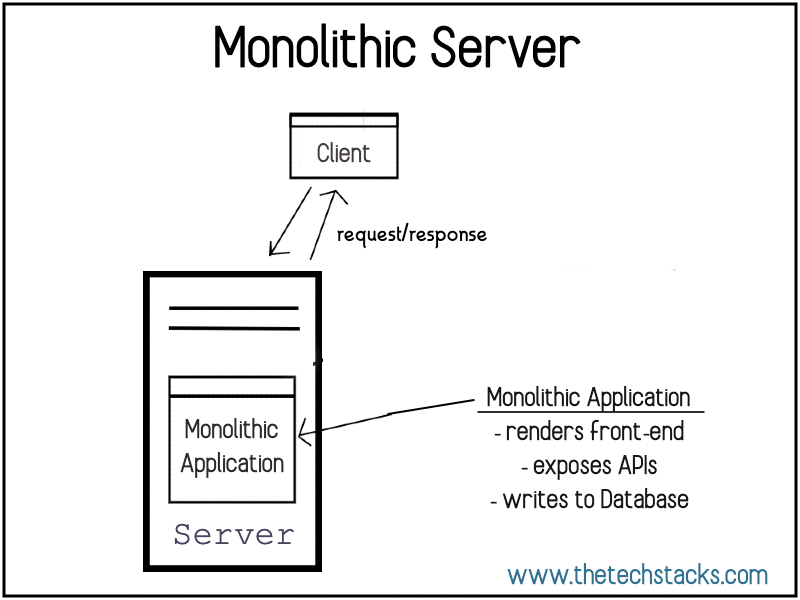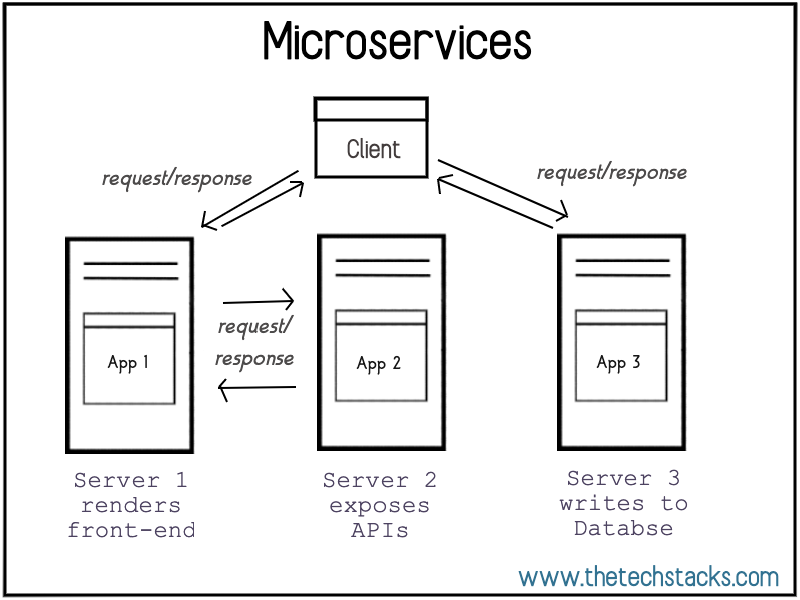What are Microservices?
In the past, developers have written monolithic applications. A monolithic application is a massive program written in one programming language. It handles different types of logic like rendering front-end, validating schema, sending notifications, and exposing API. Having all the application code in one place could cause a lot of distress!

Many problems arise in a monolithic application. For instance, a monolithic back-end application that processes all logic would eventually become very large. If the app grows large, it becomes difficult for the developers to add features or to maintain the code. Developers would spend more time to prevent regression or to fix a bug. Consequently, application deployment to the server happens less frequently, and the deployment process becomes heavy. More resources, like people and time, are needed to maintain the application on the server. Overall, the overhead of sustaining the server, deploying the code, supporting the app, and adding features make the target deadline not met.
How can we prevent these issues? Microservices, of course!

Imagine a monolithic application handling front-end logic, APIs, and saving data. Now, imagine that the app split up into three smaller apps. The first app handles the front-end logic, the second app handles APIs, and the third saves the data. Each app runs on different servers and communicates with each other to complete a task. Having the apps split up into smaller apps and running on its server is an illustration of an architectural style called microservices.
There are many benefits from adapting to a microservice architectural style. Having a microservice design allows each microservice to work independently of one another. As a result, each microservice is deployed autonomously and can change without affecting other services. For instance, other services do not need to be down while one service is updating. If the newly deployed service fails, other services still run. If problems arise with the new deployment, the engineer rolls back the app to its previous version. For these reasons, microservices allow for delivering software faster and safer.
Microservices allow each service to able to track its performance, errors and logs individually. These tracking abilities enable an engineer to improve performance and scale each service separately, depending on its usage demands. For instance, an engineer writes a service in a different programming language that best suits its needs and performance. Or, a dedicated team owns a service and maintains it more manageable. Thus, each microservice is stable and concise.
To sum up, microservices are small and loosely coupled services that work together to complete a task.
Thank you for reading and please feel free to share using the links below!